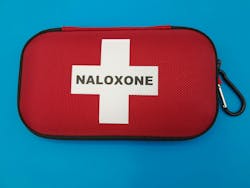Survey finds more than 3 in 4 Americans don’t feel they could help someone suffering an overdose
A new survey of 1,000 Americans from The Ohio State University Wexner Medical Center and College of Medicine found more than three in four Americans say they would not be able to step in to treat an overdose.
“A recent Ohio State survey found that 77% of people are concerned that they wouldn't be able to respond if they saw someone having an overdose. And while, I'm not surprised about this result, I am deeply concerned because we know that the more of us who are prepared to save a life, the more lives we can save,” said Trent Hall, DO, an addiction medicine physician in Ohio State’s Department of Psychiatry and Behavioral Health.
Both naloxone and nalmefene, which are sold under the brand names Narcan and Opvee, are nasal sprays that are simple to use to reverse the effects of an opioid overdose.
“Some people tell me that they're nervous or uncomfortable with the idea of using naloxone to save a life,” Hall said. “But there's nothing more terrifying than being in the moment, seeing someone who's having an overdose, and being powerless to help. Carrying naloxone empowers you to save a life in your community.”
Naloxone is available over the counter without a prescription, and many community-based programs also provide naloxone for free.
“Our own research shows that when patients come here for treatment of opioid use disorder, the average patient has survived five accidental overdoses before coming here. And each one of those was a potentially fatal event,” Hall said.
If someone is unconscious, not breathing and unable to respond when gently shaken, naloxone should be administered. If the person has passed out for another reason other than an opiod overdose, giving them naloxone will not cause any harm.
How to administer naloxone
• Check the person who might be having an overdose.
• Shout their name and shake their shoulder.
• If they are not breathing, open up naloxone nasal spray and spray into their nostrils.
• Call 911 to make sure they get attention from emergency medical services.
• Another does of naloxone may be needed if they don’t respond to the first dose after 2-3 minutes.
• Stay with them until emergency help arrives.

